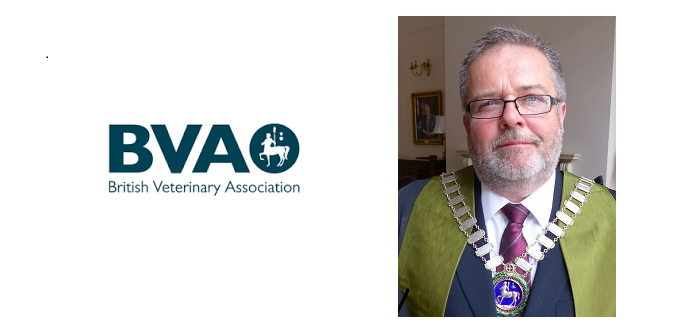More than half of vets (53%) have suffered injuries in the last twelve months when working with farm animals according to a survey carried out by the British Veterinary Association (BVA) and released today to coincide with the start of Farm Safety Week (July 6-10).
Although the examples of on-farm injury given by BVA relate largely to vets suffering kicks and crushing from large animals, the problem is seen as an all-species issue with the association urging all vets, veterinary employers and farmers to “read and act on” its Farm Health and Safety guide and information leaflets.
BVA president John Blackwell (pictured above) emphasised the importance of all parties taking health and safety on farm seriously.
“Health and safety assessments can reduce injuries and save lives by informing action plans that help minimise the risks,” he said. “Farmers and vets up and down the country have seen colleagues injured on farms and consequently unable to work. Many injuries are avoidable if veterinary practices, their employees and farmers all take action to minimise the risks.
“I want veterinary practices to understand their responsibilities and make use of our resources to help protect their employees on farm visits. I want vets going out on farms to keep updating existing risk assessments to keep their colleagues and themselves safe. I hope the client leaflet helps vets and farmers to start the conversation and take action to reduce the risks.”
AHDB Pork guidance
Health and safety guidance in relation to pig production units is available on the AHDB Pork website, including the following pig handling check-list:
- The most common accidents to people occur when handling pigs. Wounds to the legs and crush injuries, for example, caused by poor handling techniques. These types of injuries can be reduced by:
- Making sure staff have received training or instruction in safe and efficient handling techniques.
- Keep a visual check of the animal and avoid facing away from it.
- Design and layout of buildings and facilities.
- Ensure a clear escape route when in a pen with a boar or sow with a litter or a sow in close proximity to another sow and litter.
- Ensure the sow is properly restrained or segregated when working with her piglets.
- Make full use of pig boards when moving or working among animals. Pig boards help guide the animal in the direction you require it to go and are a good form of protecting the handlers’ legs if the pig decides to bite.
- Lift young pigs by grasping the hind leg and supporting their chest with the other hand.
- Pigs above 12kg should not be lifted and when they need to be moved they should be herded.
- All stock handlers should be aware that boars can be very aggressive if left alone. All boars should be able to hear, see and smell other pigs.
- Boar tusks may be reduced in length where necessary to prevent injuries to other animals or for safety reasons.




